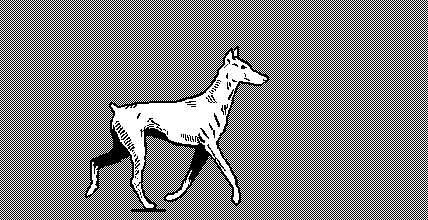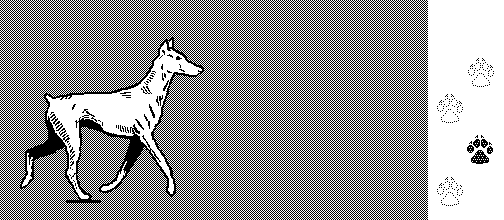A
canter (left lead) is shown in the above cartoon. The step sequence of the canter is shown at the right. The canter (sustained gallop; slow gallop; middle gallop) is a three-beat gait that includes a period of suspension at fast speeds. The sequence of limb impact on the ground is 1-2-1: a hindlimb, then a diagonal, followed by a forelimb, and, when present, suspension.
The canter is an asymmetrical gait, i.e., limb patterns are different on the right and left sides. The dog is said to be "leading to the right/left" according to which forelimb is in the lead. The leading forelimb is the one that is not part of the diagonal (the one that lifts off just before suspension, at a fast canter). The leading limb bears weight for a longer period of time than the other forelimb.
When moving in a circular path, a quadruped nearly always leads with the forelimb closest to the center of the circle (otherwise it is more likely to trip). This is because the contralateral hindlimb shifts the animal's center of gravity laterally (toward the center of the circle) as well as forward. On a straight path, a dog will normally shift leads to alleviate fatigue or in preparation for turning.
The canter is a preferred gait for cruising or loping easily across a field because it is not tiring and it provides good support. It is often slower than a trot but it can be easily shifted into the faster transverse gallop. Because of the even distribution of support (tripod involving hindlimb followed by tripod involving forelimb), the canter is suited for rough ground or where footing is uncertain.





